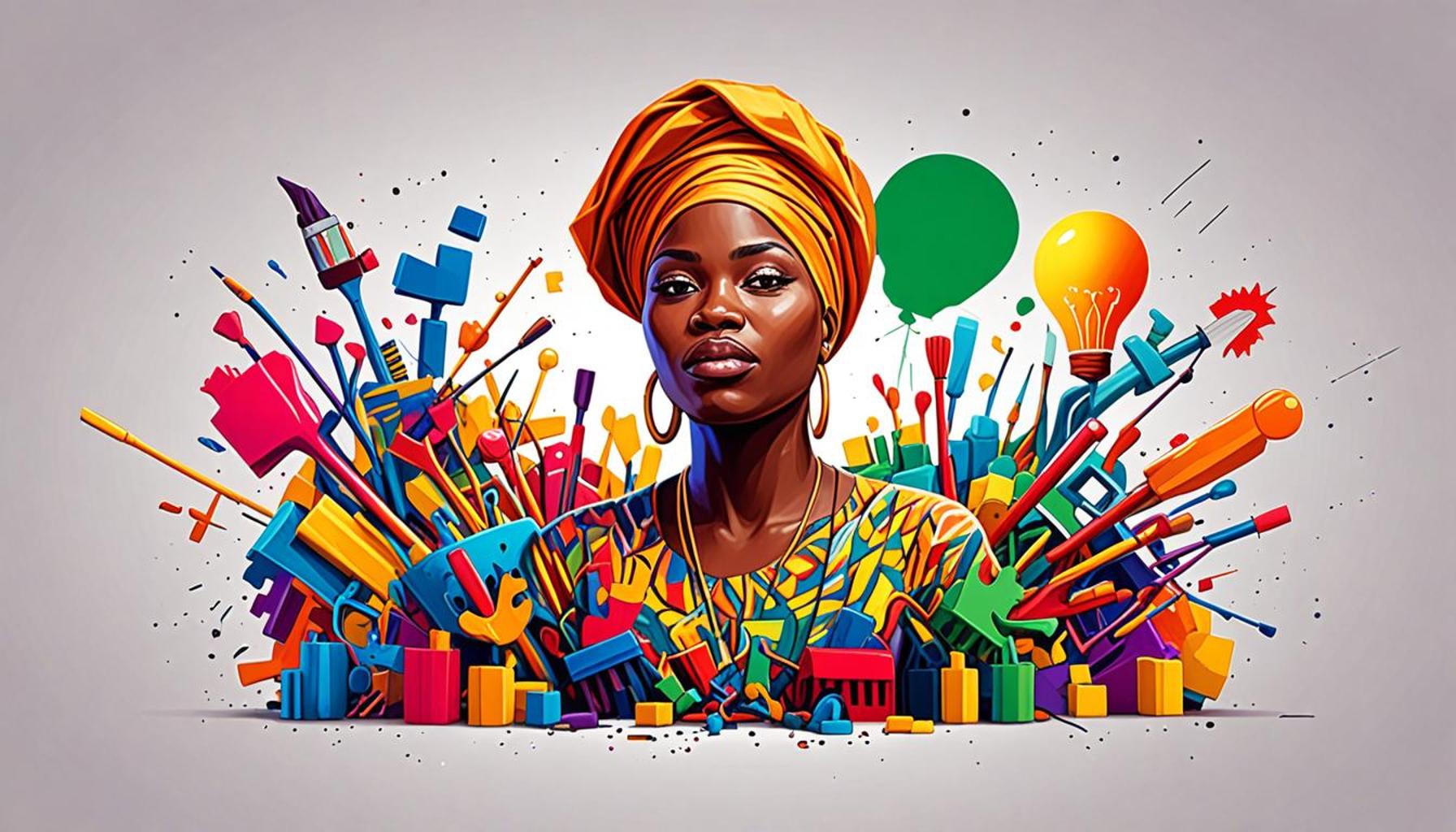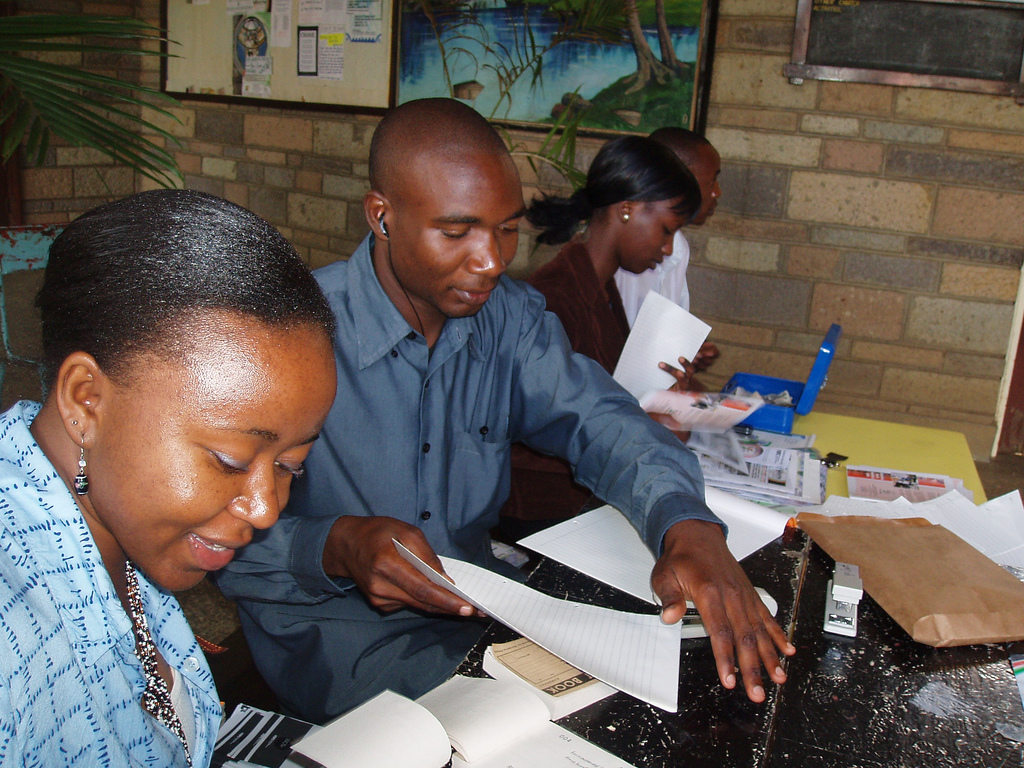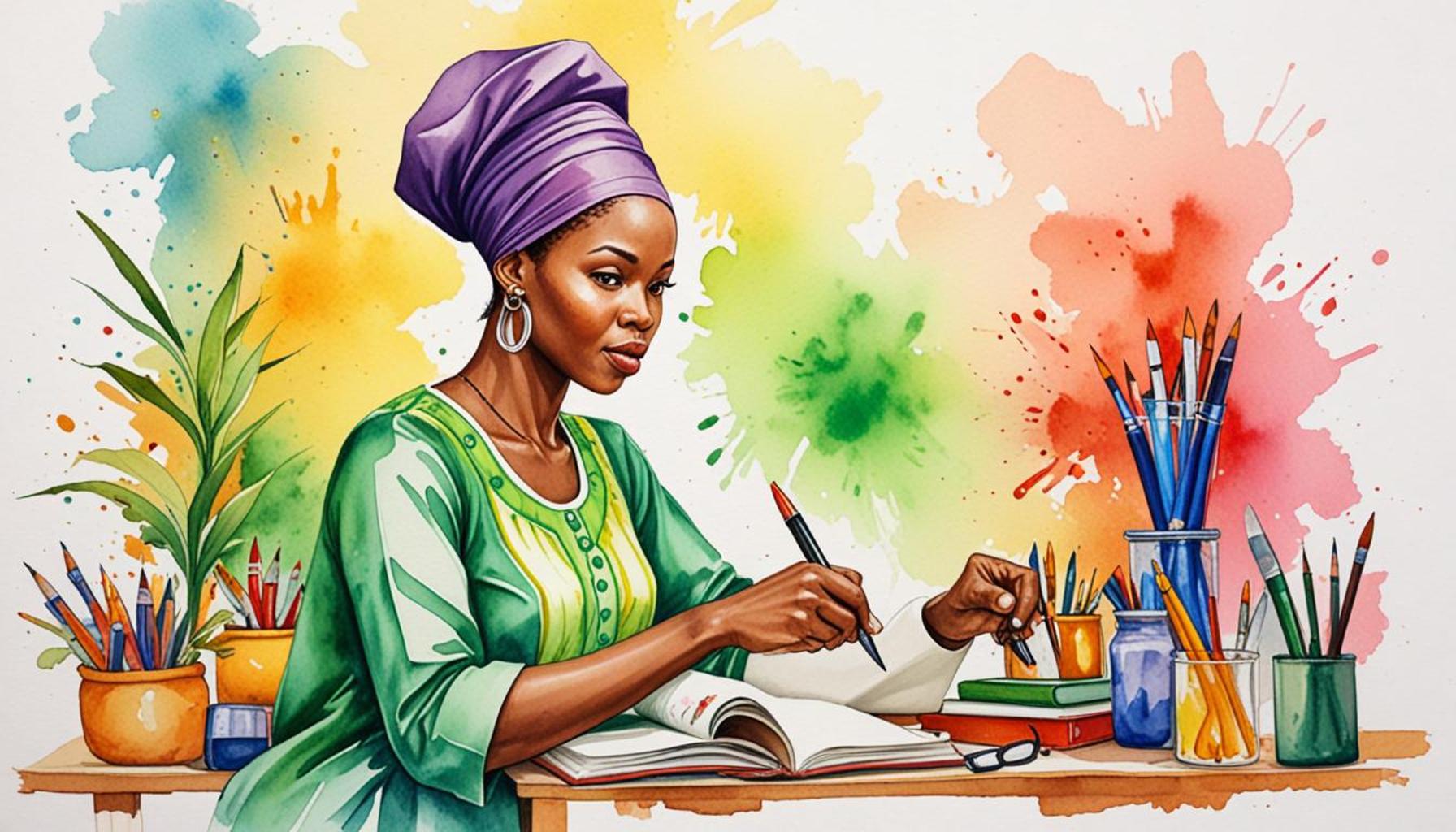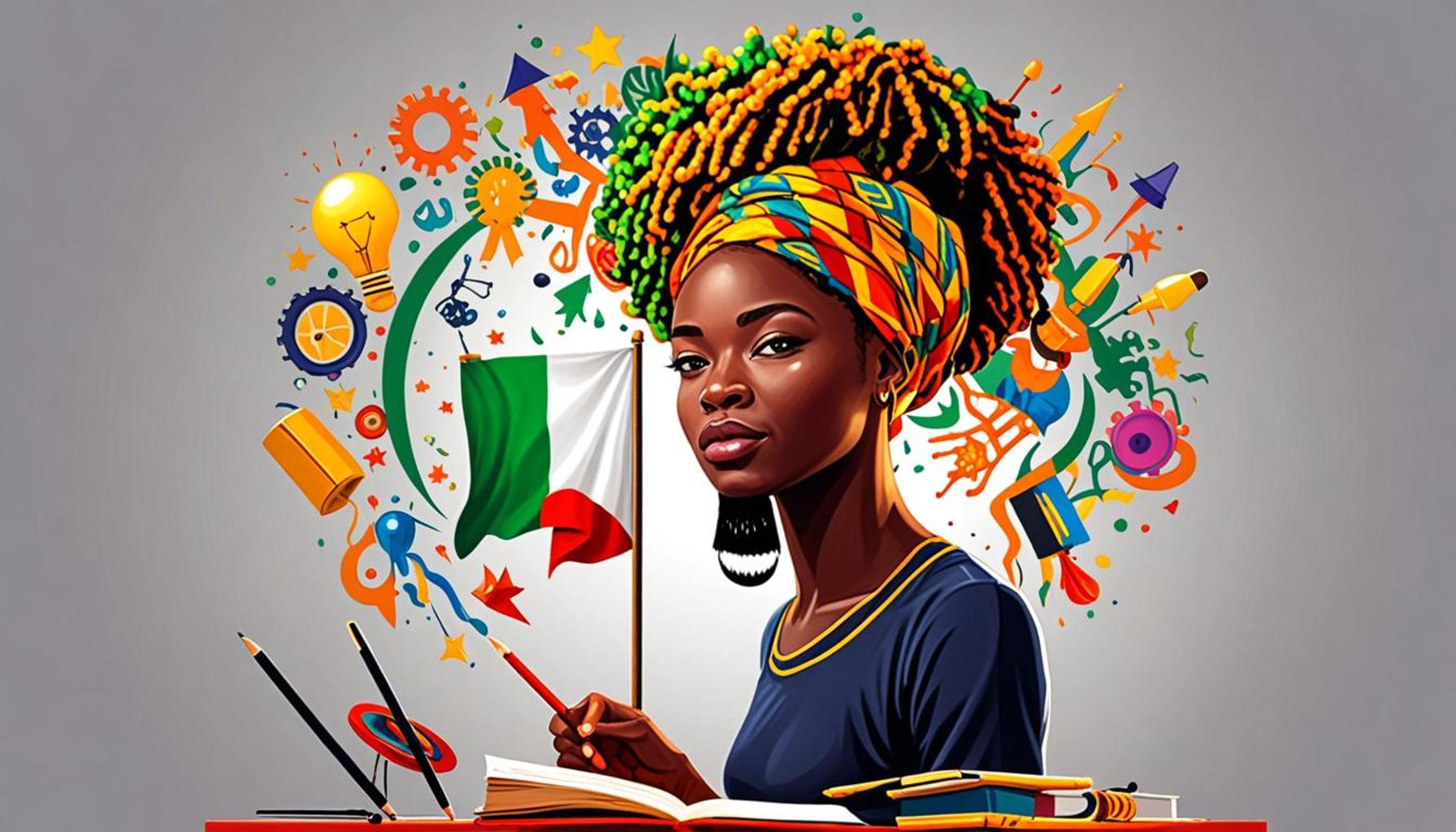Transforming Failures into Opportunities: The Role of Embracing Challenges in Nigeria’s Creative Industry

Understanding the Dynamics of Nigeria’s Creative Industry
In the vibrant and multifaceted realm of Nigeria’s creative industry, where the essence of culture and innovation collide, the path to success is often laced with obstacles. From the bustling streets of Lagos to the serene landscapes of Enugu, artists, musicians, filmmakers, and designers are navigating a landscape filled with both remarkable opportunities and daunting challenges. The ability to transform failures into opportunities is not merely an advantage; it is essential for survival and growth in this competitive field.
The Importance of Resilience
Resilience stands as a cornerstone for success among Nigerian creatives. The industry is known for its volatility, influenced by factors such as economic fluctuations and changing consumer preferences. Take the Nigerian music scene, for instance, where artists like Burna Boy and Tiwa Savage faced numerous rejections and criticisms early in their careers. Yet, through relentless determination and the ability to learn from each setback, they not only found their footing but also emerged as global icons. Such stories exemplify how resilience fosters a culture of perseverance and adaptability, vital traits for anyone looking to thrive in this field.
Learning from Experience
Learning from Experience plays a pivotal role in shaping creative endeavors. Often, a failed project can provide more valuable insights than a successful one. For instance, Nigerian filmmakers might scramble to get funding for a project that doesn’t materialize, leading to frustration. However, these experiences often facilitate learning about budgeting, script analysis, and audience engagement. In many cases, these lessons culminate in more polished and impactful future projects. Emerging directors like Kunle Afolayan, who experienced both hits and misses, often credit their previous failures as the bedrock upon which they constructed subsequent successes.
The Power of Networking
Networking is another critical element for growth in Nigeria’s creative ecosystem. Building relationships with fellow creatives, industry veterans, and mentors allows individuals to share experiences and failures freely. These interactions often culminate in collaborative projects that tackle shared challenges. Networking events, workshops, and online forums provide fertile ground for exchanging ideas and strategies, allowing creatives to turn collective failures into innovative solutions. The success of initiatives like the “Made in Nigeria” campaign showcases how collaboration can shine a light on shared struggles and pave the way for breakthrough opportunities.
While challenges such as limited funding, inadequate infrastructure, and market saturation frequently hinder many aspiring artists, the tenacity of Nigerian creatives often leads them to innovate around these hurdles. A painter in Abuja might leverage social media to sell art directly to collectors, circumventing traditional gallery spaces that might stifle creativity due to bureaucratic processes.

As we delve deeper into the intricate relationship between failure and opportunity, we encounter inspiring tales of Nigerian artists who have skillfully turned setbacks into stepping stones. These stories not only highlight the resilience and passion that define the nation’s creative talents but also demonstrate a critical shift in perspective that can drive sustainable growth and innovation in the industry. By embracing failures as learning experiences, Nigerian creatives are not simply surviving—they are thriving, continuously redefining the landscape of their crafts and inspiring future generations to do the same.
YOU MAY ALSO LIKE: Read read another article
Embracing Challenges: A Catalyst for Innovation
In a world where the creative industry is often romanticized, the reality for many Nigerian artists is a tumultuous journey strewn with failures and disappointments. However, rather than allow these setbacks to define their trajectories, many creatives in Nigeria harness their struggles, viewing them as essential learning experiences. This transformative approach has been pivotal in shaping the landscape of Nigeria’s creative industry, providing a resilient foundation amid adversity.
The Learning Curve of Failure
Embracing failures allows artists to develop a rich tapestry of experiences. Numerous Nigerian musicians and filmmakers have faced public backlash or economic hardships at various points in their careers. Take, for instance, the case of Yemi Alade, who faced initial rejection from various record labels. Instead of succumbing to defeat, she chose to refine her craft and build a loyal fan base through grassroots efforts and engagements on social media platforms. Her story illustrates how artists can leverage the learning curve of failure to create content that resonates deeply with their audience.
The Role of Innovation in Overcoming Hurdles
Nigerian creatives often find innovative solutions to overcome industry hurdles. The struggle with limited funding, for instance, has prompted many to seek unconventional routes for resources. Here are some noteworthy strategies:
- Crowdfunding: Artists are increasingly turning to platforms like Kickstarter and GoFundMe to fund their projects, connecting directly with audiences who support their visions.
- Collaborations: Pooling resources with fellow creatives can enable larger projects to come to fruition. This practice not only mitigates financial risk but also enriches the quality of the output.
- Digital Platforms: Utilizing social media channels and streaming platforms allows artists to showcase their work to a global audience and monetize their creations effectively.
Moreover, these strategies reflect a robust understanding of market dynamics, as creatives adapt to the evolving needs of consumers. The rise of Nollywood, for instance, has largely been driven by filmmakers experimenting with genre and storytelling, proving that innovation is crucial to remain relevant in a competitive landscape.
Reshaping Perspectives Toward Failure
The overarching narrative surrounding failure must be reshaped in Nigeria’s creative industry for true progress to occur. Creatives are gradually moving away from viewing failure as a stigma to understanding it as a crucial part of the creative process. Public forums and workshops encourage this mindset shift, helping artists accept and share their experiences candidly, thereby normalizing the conversation around failure.
As we navigate the complexities of Nigeria’s creative landscape, it becomes increasingly clear that the ability to transform failures into opportunities is not merely a skill; it is a vital necessity for reconceptualizing success. By learning from setbacks, innovating through challenges, and reshaping perspectives on failure, Nigerian creatives are not only paving the path for their futures but are also fostering a more resilient and dynamic industry that inspires talents across the globe. As the narrative unfolds, these themes will continue to echo through the corridors of art, music, and film, urging every aspiring creator to see failures as stepping stones rather than stumbling blocks.
Understanding the Impact of Challenges on Creativity
In Nigeria’s vibrant creative industry, embracing challenges has become synonymous with innovation and growth. Creatives, from filmmakers to fashion designers, often encounter failures that could deter their progress. However, it is precisely these setbacks that can serve as a powerful catalyst for transformation. By viewing obstacles as opportunities, artists and entrepreneurs can unlock new avenues for creativity and expression. This mindset fosters a culture of resilience that is essential for navigating an increasingly competitive landscape.Additionally, the concept of collaborative creativity emerges through these challenges. When artists face difficulties, they often seek support from their peers, leading to collaborative projects that combine diverse talents and ideas. This not only enriches the final product but also creates a sense of community within the industry. The synergy generated from such collaborations can result in groundbreaking works that may never have emerged in isolation.
Promoting a Culture of Risk-Taking and Innovation
Nigerian creatives are increasingly adopting a risk-taking mentality. This shift is evident in various sectors, from music to visual arts, where experimentation is celebrated rather than shunned. The willingness to push boundaries and explore uncharted territories is vital for personal and professional development. By cultivating a culture that embraces risk, the creative industry can foster an environment where innovation flourishes.Investors and stakeholders are beginning to recognize the potential of this approach, providing funding and support for ambitious projects that challenge the status quo. For instance, filmmakers who have experienced initial box office failures may use their setbacks to refine their storytelling techniques, leading to critically acclaimed works in future projects. This iterative process highlights the importance of learning from failures rather than avoiding them. Ultimately, the narrative surrounding failures in Nigeria’s creative industry is evolving. As more individuals embrace their challenges, the potential for growth and success becomes limitless. The journey of transforming failures into opportunities cultivates not just resilient artists, but a thriving creative economy that can compete on a global scale.
RECOMMENDED: Check out this similar article
Navigating the Landscape of Failure
The creative industry in Nigeria is exponentially growing, yet its landscape is riddled with challenges that can often lead to setbacks. Recognizing these hurdles is essential for understanding how to turn failures into opportunities. Noteworthy failures among Nigerian creatives, such as the initial challenges faced by iconic writer Chimamanda Ngozi Adichie, illustrate the lesson that resilience can pave the way for success. Adichie’s early publications received criticism and lukewarm reception; however, she used these experiences not just to improve her writing but to expand her narrative. Her eventual acclaim highlights how navigating the landscape of failure leads to remarkable breakthroughs.
The Power of Community and Networking
In Nigeria’s creative ecosystem, the significance of community cannot be overstated. Artists, musicians, and filmmakers often band together, forming networks that bolster one another through tough times. In the wake of failures, this sense of community fosters a collaborative environment that cultivates resilience. For instance, platforms like Creative Lagos and Art Twenty One have emerged, providing spaces for creatives to share ideas, offer feedback, and co-create. These networks not only provide emotional support but also facilitate skill-sharing and mentorship programs that empower up-and-coming artists to overcome their obstacles.
Case Studies of Transformation Through Challenges
Real-life stories abound that exemplify how failure can springboard artists into new heights. Nigerian filmmaker Kunle Afolayan faced financial losses with his early projects, compelling him to reevaluate his approach. Afolayan adapted by creating films that were both culturally relevant and commercially viable, ultimately leading to significant box office successes with movies like October 1 and The CEO. These triumphs amplify the message that embracing challenges can lead to artistic evolution and broader acceptance among audiences.
The Role of Government and Policy Support
The potential for transforming failures into opportunities in Nigeria’s creative industry cannot be accomplished in isolation. Government policies designed to support the sector are critical. Initiatives such as tax incentives for filmmakers and grants for artists play a vital role in ensuring that creative talents have the resources they need to recover from failures. The National Film and Video Censors Board (NFVCB) has also pledged to streamline approval processes, aiming to reduce the bureaucratic hurdles that often contribute to the underperformance of creative projects. Improved government engagement bridges the gap between aspiration and tangible success, allowing creatives to transform their failures into stepping stones toward opportunity.
Global Recognition and Local Experiences
Another critical aspect of transforming failures into opportunities is learning from global best practices while tailoring them to fit local circumstances. Nigerian creatives increasingly reference international success stories to inform their strategies. Successful artists like Burna Boy and Wizkid have harnessed their unique experiences and cultural narratives, ultimately attracting global recognition in the music industry. Their journeys encourage aspiring creatives to not only embrace failure but also view their local experiences as valuable contributions to a global narrative.
The interplay of community support, individual resilience, effective policy measures, and the adaptation of global practices underscores the dynamic nature of Nigeria’s creative industry. As artists and creatives navigate their outlets, the understanding that failure is not the end, but rather a component of growth, will increasingly resonate throughout the industry, inspiring future generations to take risks and innovate. With every challenge embraced, the possibilities for transformation remain limitless, showcasing the undeterred spirit of Nigerian creativity.
CHECK OUT: Click here to explore more
Conclusion: The Unyielding Spirit of Nigerian Creativity
In the vibrant landscape of Nigeria’s creative industry, the journey is often paved with challenges that intricately weave together trials and triumphs. The stories of renowned figures such as Chimamanda Ngozi Adichie and Kunle Afolayan serve as powerful reminders that embracing failures can catalyze profound transformations. Their experiences highlight the essence of resilience—a trait that enables creatives to analyze setbacks and re-emerge with innovative ideas and renewed vigor.
The essential role of community and networking cannot be overlooked. Platforms like Creative Lagos and Art Twenty One have created a nurturing ecosystem where collaboration thrives, turning the discomfort of failure into collective learning and growth. As creatives come together, they not only share resources but also lay the groundwork for a more resilient industry.
Furthermore, government and policy support have emerged as vital catalysts in this transformative journey. With tailored initiatives assisting creatives to overcome market hurdles, the potential for artistic success becomes more attainable. By investing in the creative sector, policymakers actively contribute to a culture that celebrates innovation and supports risk-taking.
As the current wave of Nigerian creatives continues to gain global recognition, the narrative becomes clearer: failures are not final destinations but necessary detours that lead to extraordinary possibilities. This shift in perspective encourages both established and emerging artists to boldly confront challenges, redefine success, and ultimately enrich the cultural landscape. Indeed, by turning failures into opportunities, Nigeria’s creative industry exemplifies an undeterred spirit, one that transforms adversity into a canvas of limitless potential.


